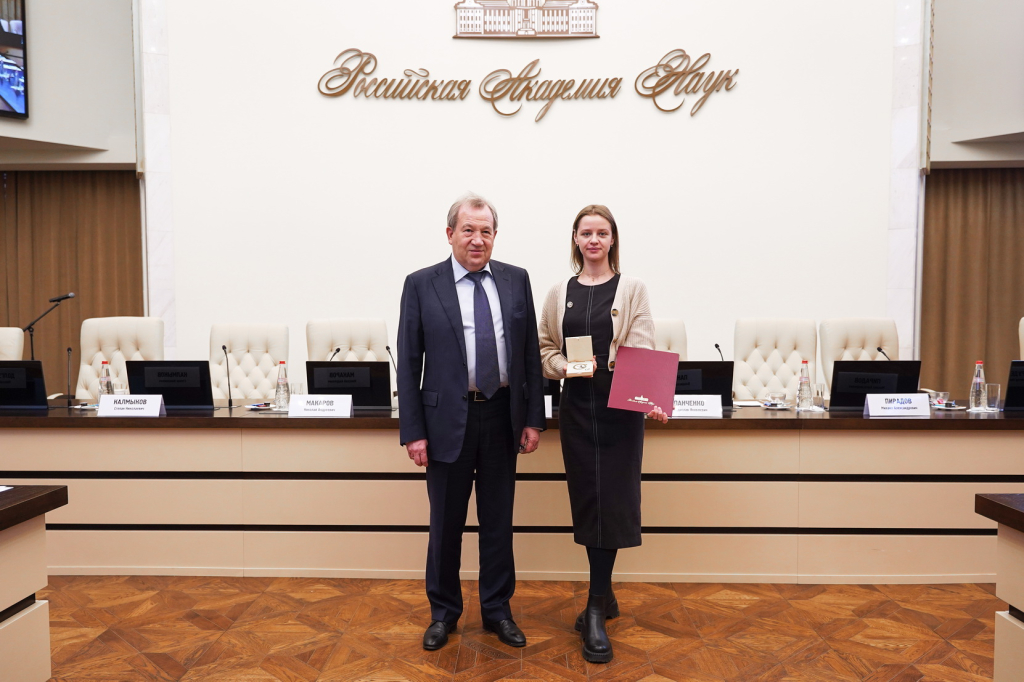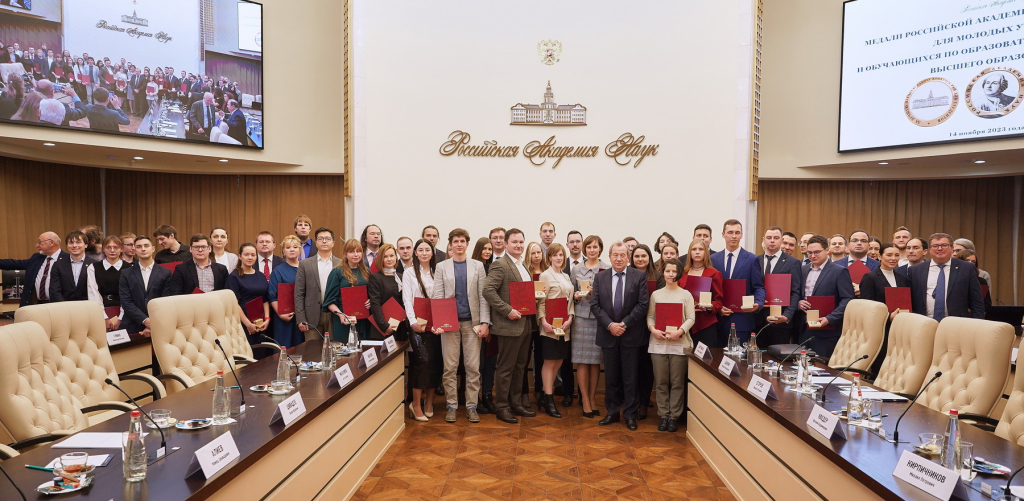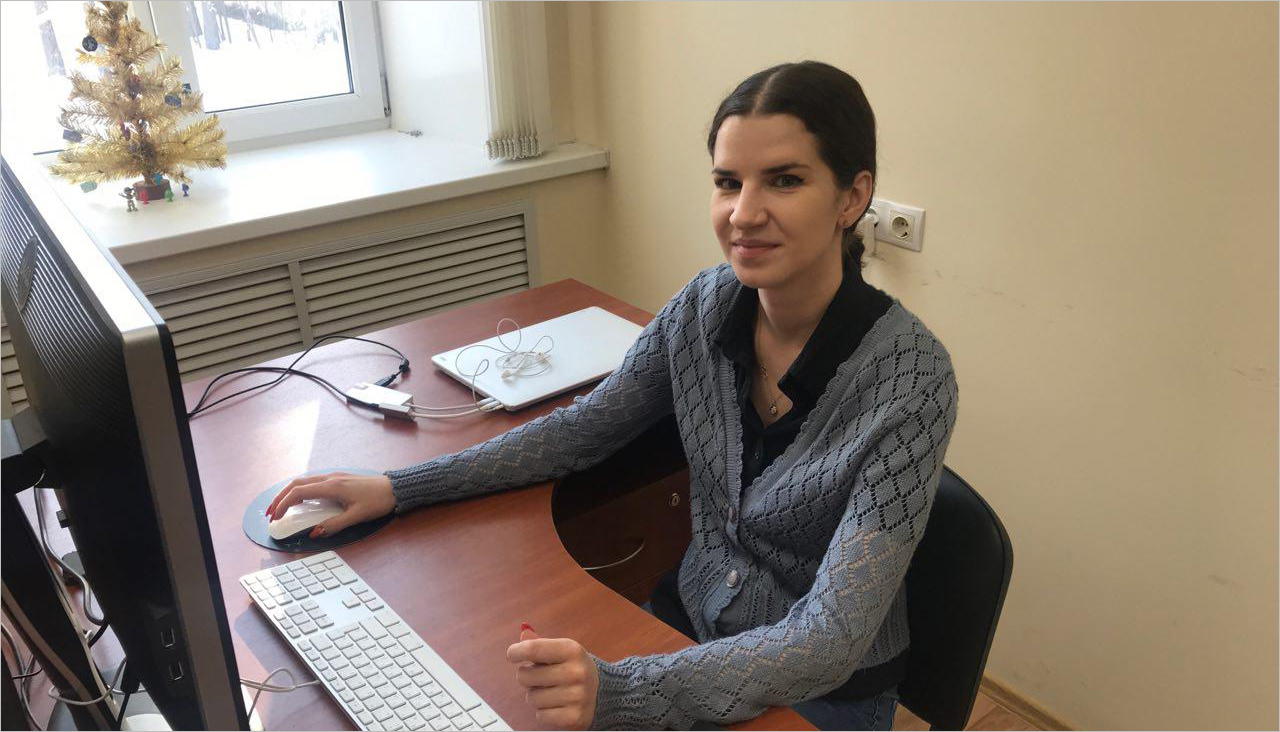Young JINR scientists awarded medals of Russian Academy of Science
News, 15 November 2023
Two young JINR scientists, Liudmila Kolupaeva and Elizaveta Bushmina, are among winners of the Russian Academy of Science (RAS) medals for young scientists and students following results of the 2022 competition. Both of them received awards for their scientific papers in the fields of nuclear physics. The ceremony took place during the RAS Presidium meeting on 14 November. RAS President Academician Gennady Krasnikov presented the awards.
Liudmila Kolupaeva, Deputy Head of the Experimental Department of Physics of Elementary Particles at DLNP JINR, received a medal for her series of scientific papers “Measurement of oscillation parameters in long-baseline accelerator neutrino experiments”.
The majority of the series consists of articles that present the results of Liudmila Kolupaeva’s tasks in the NOvA collaboration, starting in 2015. The series also includes several review papers covering the current situation in the field. A number of articles focus on the effect of matter for long baseline accelerator experiments and modeling of such experiments according to the approach developed by the DLNP JINR team in collaboration with Liudmila. “I am very glad to be one of the winners, and I’m glad that a fundamental research paper received one of the Russian Federation’s most prestigious awards for young scientists,” Liudmila Kolupaeva comments.
An intern researcher at VBLHEP JINR Elizaveta Bushmina is one of the winning students. She received a medal for a series of scientific papers of her master’s degree, “On the interaction of ionising radiation with plastic objects made through three-dimensional printing for problems of medical physics.” Elizaveta has started working at the Joint Institute after graduating from the School of Nuclear Science and Engineering of the National Research Tomsk Polytechnic University, and is now doing postgraduate studies.
Elizaveta Bushmina noted that 3D printing was currently used to make implants, various new materials, industrial products, and many other things. However, its use in medical physics is an unresolved issue. The creation of shaping devices and dosimetry phantoms using additive technologies is of particular interest, since parameters of such products vary depending on the type of radiation therapy, the type of disease, and many other factors. One of these devices is a collimator, which sets the shape of an ionising radiation beam. When producing the collimator, it is necessary to choose the optimal product dimensions and material that would allow carrying out precise screening of patient’s healthy tissues, and it is necessary to set the printing parameters accurately to obtain the desired product properties.
 Left to right: RAS President Gennady Krasnikov, Elizaveta Bushmina. Image © https://new.ras.ru/
Left to right: RAS President Gennady Krasnikov, Elizaveta Bushmina. Image © https://new.ras.ru/
“It was an interesting work, and it had its challenges, too. Developing something new is no easy task: you never know what you are going to discover! For me, the medal of the Russian Academy of Sciences is one of the highest awards. It presents opportunities in world–class science and allows me to assess the significance of the work I have done,” Elizaveta Bushmina said.
This year, the medals of the Russian Academy of Sciences for young scientists and students marked outstanding work in the fields of mathematics, physics, astronomy, medicine, chemistry, biology, geography, energy, materials science, mechanical engineering, information technology, agriculture, economics, psychology, history, philology, and international relations.
According to Academician Mikhail Dubina, Chief Scientific Secretary of RAS Presidium, 503 papers were part of the competition. Most of them were series of scientific studies published either in the leading Russian and foreign journals or as monographs.

